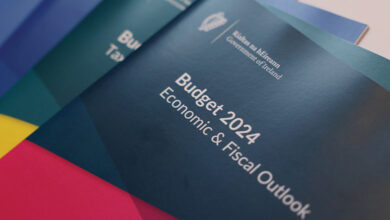Minister for Transport Eamon Ryan TD: ‘Putting Ireland on track for a new age of rail’

Ireland’s first All-Island Strategic Rail Review was published as a draft in July 2023 for the purpose of Strategic Environmental Assessment (SEA) public consultation. This draft Review represents the most comprehensive proposal for decades on the kind of rail network that can best serve the needs of all those who share this island into the future, writes Minister for Transport Eamon Ryan TD.
 The All-Island Strategic Rail Review was commissioned and overseen by my department, in cooperation with the Department for Infrastructure in Northern Ireland. Arup, an engineering firm, was appointed to carry out the Review. Its recommendations are based around six goals which would be delivered over the coming 25 years.
The All-Island Strategic Rail Review was commissioned and overseen by my department, in cooperation with the Department for Infrastructure in Northern Ireland. Arup, an engineering firm, was appointed to carry out the Review. Its recommendations are based around six goals which would be delivered over the coming 25 years.
I co-launched the review in April 2021 with Nichola Mallon, then Minister at the Department for Infrastructure, Northern Ireland. A public consultation was then undertaken between November 2021 and January 2022 to gather views on the role of rail and priorities for investment. More than 7,000 submissions were received, demonstrating the keen public interest in the railway system. These responses were key in developing the draft recommendations in the draft Review.
It is a truly transformative document that maps out 30 recommendations in total. These recommendations would deliver, for many, new and enhanced routes, and greater regional balance, along with faster speeds and better frequency, putting communities across the island on track for a new age of rail.
It would also boost sustainable and accessible transport choices for the public. The new rail proposals would bring huge benefits to our businesses, environment, and economies both north and south.
If all of the recommendations in this draft review are delivered, circa 700,000 more people would live within 5km of a railway station; rail journey times between some major cities could be halved; services on the busiest intercity routes could run every 30 minutes in some cases; and our rail network would be decarbonised.
It would also help take traffic off our already congested and busy roads. In addition, with this plan, rail passenger numbers would double, 90 per cent of air passengers could travel to the airport by rail, and two-thirds of freight tonnage would pass through ports served by rail.
Critically, the draft review suggests the commencement of a number of new routes, particularly across the west and north of the island, fostering greater regional balance, and widening accessibility and connectivity island-wide.
The island of Ireland has about 2,300 km (1,440 miles) of public rail lines. If the review’s recommendations are implemented, that would increase to 2,950 km (1,845 miles) of new low-carbon, faster rail lines.
We already know that when we expand our transport networks, the public votes for it with their feet. Investment in rail between 2011 and 2019 contributed to a 37 per cent growth in passengers across the whole island, for example.
While Covid, of course, interrupted this growth, passenger numbers are returning strongly, north and south.
In other public transport areas, like the expansion of our rural bus network through our Connecting Ireland programme, we are also seeing people flock to new and enhanced services. TFI Local Link services, for example, are seeing a doubling in numbers since 2019. I have every confidence that we will see the same, if not stronger, support for new rail services.
While a primary aim is to bring better and more frequent train services to more communities, our overall goals for the rail plan would, of course, also align with and support our net zero carbon commitments in both jurisdictions.
Importantly, the recommendations of the draft Review were subject to an economic appraisal. This examined the cost of implementing all the Review’s recommendations, along with the benefits. It found that the modelled benefits at least equalled the costs, based on a capital cost range of between approximately €35 billion and €37 billion for the proposed new infrastructure across the island. The capital cost range that would apply to Ireland would be between approximately €26 billion and €27 billion.
If this investment is split evenly across the next 25 years, it would amount to an annual capital investment in the rail system of circa €1 billion over and above existing plans. This is in line with peak annual investment in the national road and motorway network in the late 2000s.
While further detailed work will be needed to test the feasibility of many of the review’s recommendations, they paint a very bright future for rail – and those who use it – across the island.
The draft review has now been published alongside the SEA documents for public consultation. This public consultation is now closed and received approximately 500 responses. My department is reviewing these responses in cooperation with the Department for Infrastructure and Arup.
Once finalised, it is intended that the final All-Island Strategic Rail Review is published following government approval in both jurisdictions.






